Here’s a quick post for the curious. As with many DIYers out there, I noticed differences when trying different power connectors on the same cables. My expectation was that the cable (metal, dielectric, etc) should have a more significant impact over the connectors. I didn’t really have time to investigate while I was finishing up my power cord shootout.
I am not the most experienced in DIY so I contacted Dave Cahoon at ZenWave Audio and he was kind enough to build identical cables of the same length and composition. The only difference being the connectors used. The most popular connectors HiFi enthusiasts use are undoubtedly ones from Furutech.
- Length: 2 meters
- Connectors: Furutech FI-46 (G) NCF – $194.99 each
- Connectors: Furutech FI-50 (R) NCF – $385 each
PCR-14 Copper Ribbon Power Cable ($899 – $1,748)
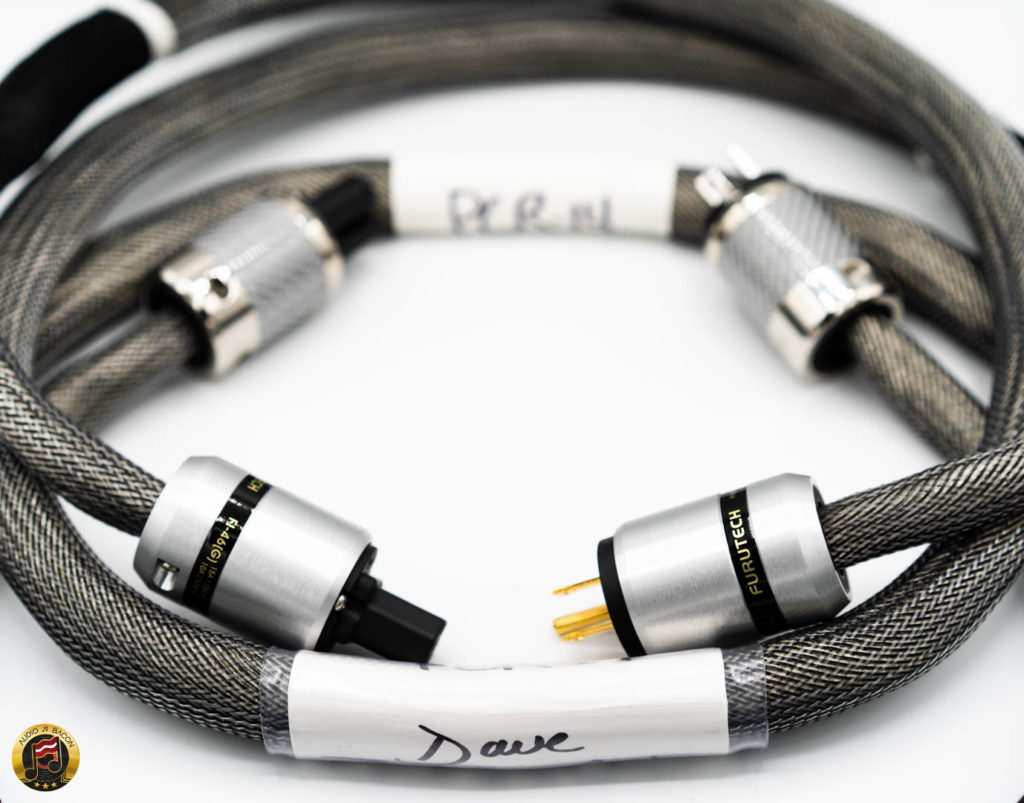
This cable has all the positive attributes of UPOCC silver with a more realistic tone and warmth. Compared to the D3 cable it is even more accurate, precise, and neutral. It is also not as forgiving or laid back vs the D3 cable. A strong point with this cable is tone… UPOCC silver is amazingly accurate but the tone is a little on the thin side, the silver/gold alloy has a warm and amazingly realistic tone that is superior to any other wire I have used.
From my extensive experience with power cords, ZenWave Cables are probably the best bang for the buck in this industry. Many of their cables outperform cables many times its price. This especially applies to their UPOCC variants (silver & gold). The theme of ZenWave Audio cables is articulation, smoothness, and neutrality.
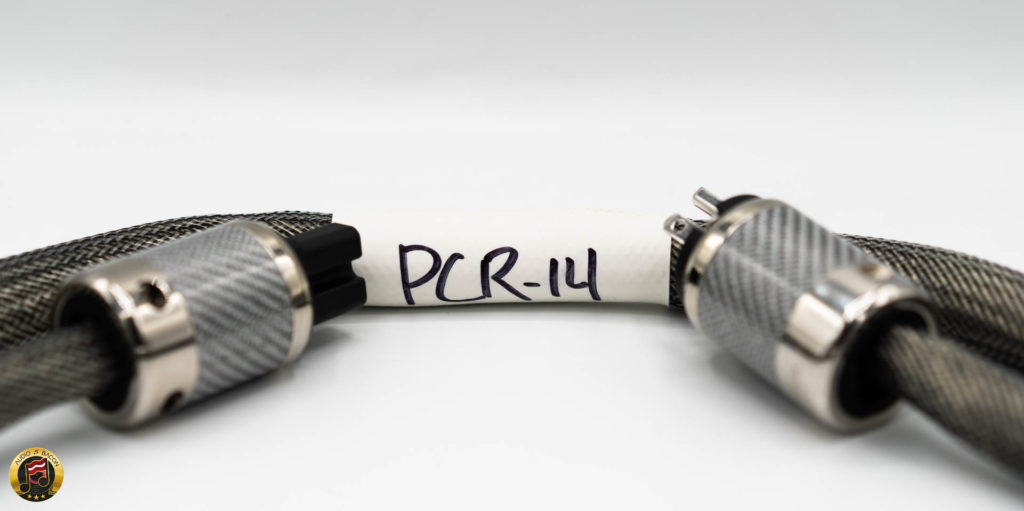

Furutech FI-46 (G) NCF vs. FI-50 (R) NCF
Once I started critically listening…it was easy to hear the enormous differences between the two connectors. Given the assumption that the cable composition would matter more, I tested the cables across more components and listening systems. After combining notes from weeks of listening, all of them aligned consistently. I have to say…I expected a difference with connectors, but not of this magnitude.
Let’s get to the differences. So the FI-46 (G) is a slightly warmer and meatier sound. It presents music with good footing and tangibility. It’s super smooth with a “heavier” sound. Switching to the FI-50 (R) NCF and you get a very different experience. First off, there’s an appreciable boost in resolution. Recordings sound more “alive” whereas the FI-46 was more calm, laid back, and relaxed. It’s a different mood across all genres of music.
The FI-50 is also quieter with more focused imaging. In addition, it separates and layers out the music far better than the FI-46. In fact, the FI-46 sounds like there’s a thick coating over the sound. Almost like a liquid gel sound – which is great if that’s what you’re looking for. It makes for easy listening but doesn’t breathe out as effortlessly as the FI-50. Consequently, the FI-50 is far more transparent sounding.
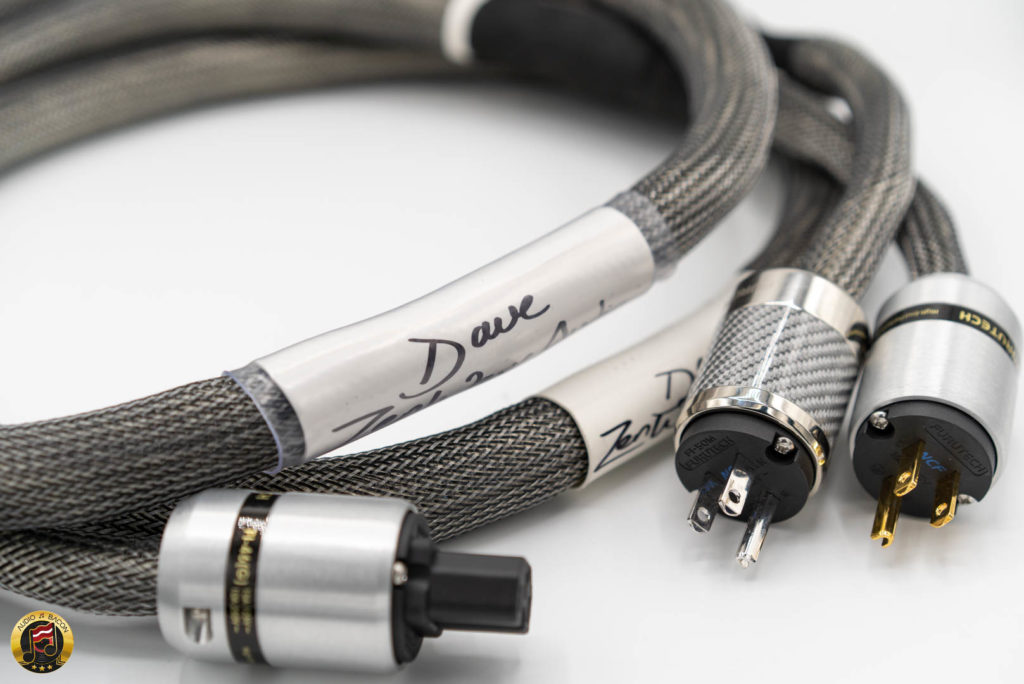
Which one is better?
My impression at the end of the evaluation was that most audiophiles will prefer the high fidelity of the FI-50 (R) NCF. Its vividness and openness are just more musically engaging. There’s also more holistic texture and detail which is important to a HiFi experience. Although the FI-50 isn’t as bold when it comes to transients, it relays them with better finesse and clarity. It’s better at preserving the intentional speed of how a guitar is plucked or how a piano note is keyed. The FI-46 is more heavyhanded and tangible but also comes off a little “muffled” and congested. It covers up some of the critical nuances, especially when it comes to stringed instruments and woodwinds.
To conclude, although both cables are 90% the same, they sound very different. To the point which got me thinking…maybe the connectors are more important? That’s kinda crazy talk, right? 🙂
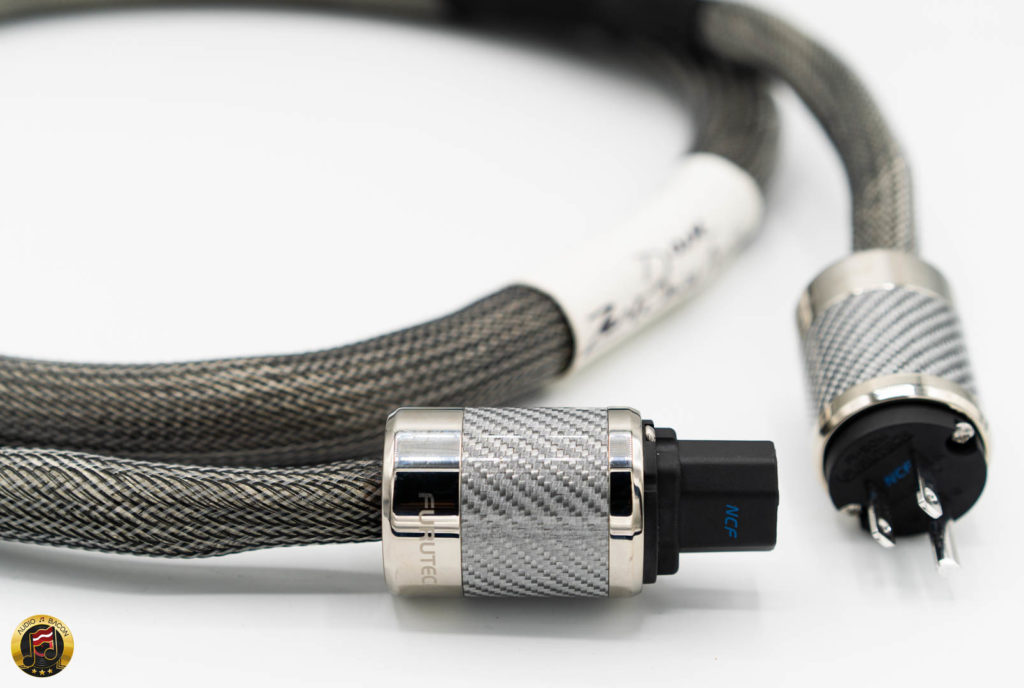
So, what does the cable contribute?
As I was listening, I was trying to figure out what both cables had in common – since they both used the same damn wire. I wanted to know what makes this a Copper Ribbon ZenWave Audio PCR-14 cable. And this is what I came up with.
- Tone. Both are very neutral. Although the FI-46 was warmer, the overall character was more colorless. This is consistent with ZenWave Audio’s philosophy of “not touching the sound.”
- Articulation. The two cables maintained a fantastic grip and control of the music. It sounds very analog yet collected and textured. There are simply no missteps in music. This is a level of precision that I don’t hear from most cables.
- Fullness. The PCR-14s are incredibly grounded and smooth. The music doesn’t artificially float but remains natural and existential. You never get a sense of haze or confusion. Although both cables have good acoustic molding, the FI-50 does add the meat in the right places. The FI-46 applies a broader brush that masks some of the inner details.
At this point, I have to say if you’re a fan of neutral – it’ll be tough to do better than the ZenWave Audio PCR-14 with FI-50 (R) NCF connectors. It’s a technical and musical achiever on many levels. If you prefer a more colored and golden hue, I would still use the FI-50 (R) NCF connectors but with darker sounding wire.
In short, the FI-50 (R) NCF connectors are an enormous upgrade – but are stupid expensive. You’re talking about almost $800 for two connectors for a single build.
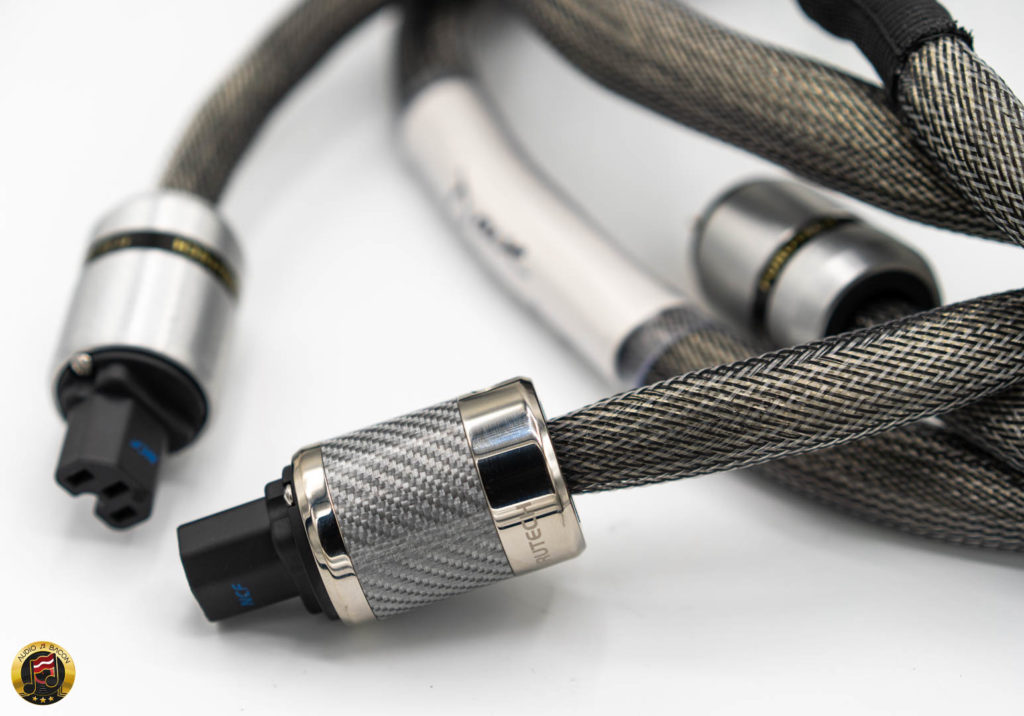
Final Thoughts
When I discussed with Dave from ZenWave Audio about the differences I heard, here was his response:
The NCF material removes some noise and makes for a cleaner sound, but the previous FI-50 without NCF material was also a big improvement over the FI-28. It is amazing how much different AC power connectors can make. In many cases, you’re better off with a decent, basic machine-made copper cable + upgraded plugs vs a more expensive cable with lesser plugs. Furutech makes a lot of connectors available with the upgraded carbon fiber/stainless steel body, such as XLR and RCA plugs, DIN plugs, headphone plugs, and more. And while it’s expensive, it does make a big difference. And I think they are worth it if the price isn’t an issue.
These parts are expensive, but they are also relative bargains for the improvements they make. They look nice and are very high quality. It also really matters what the cable is plugged into. I recommend the Furutech GTX NCF receptacle, and optionally the wall frame and cover. I have the FPX (Cu) unplated bronze receptacle as a lower-cost option. I don’t recommend hospital-grade receptacles as they scratch right through platings on the male plugs.
I’m sure most DIYers are aware of the differences connectors could make but I just wanted to take a deeper dive. After this experiment, I’ll probably be sticking to FI-50s for my future builds. Now I understand why so many high-end cable designers exclusively use these connectors for their flagships. Hopefully, this was helpful! Stay safe and happy weekend!
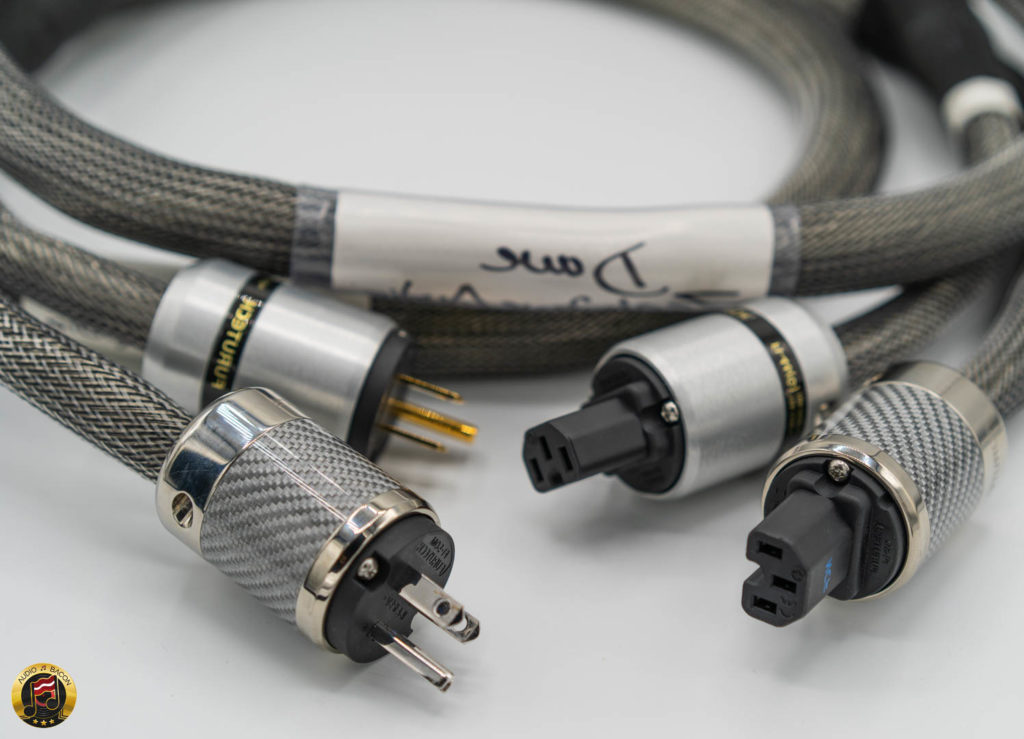




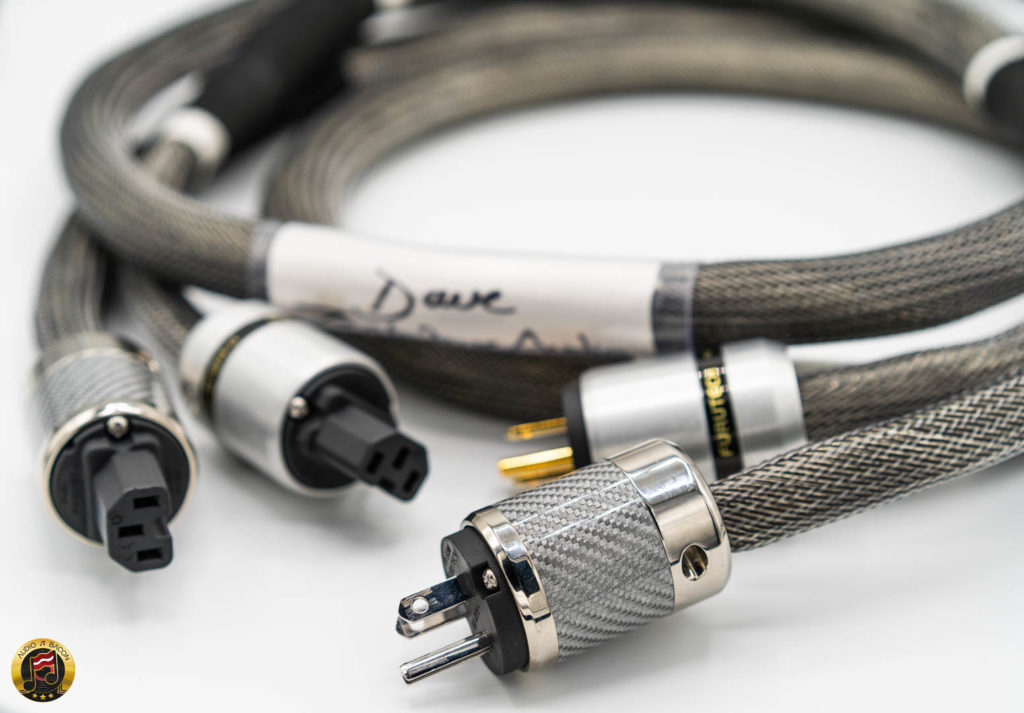
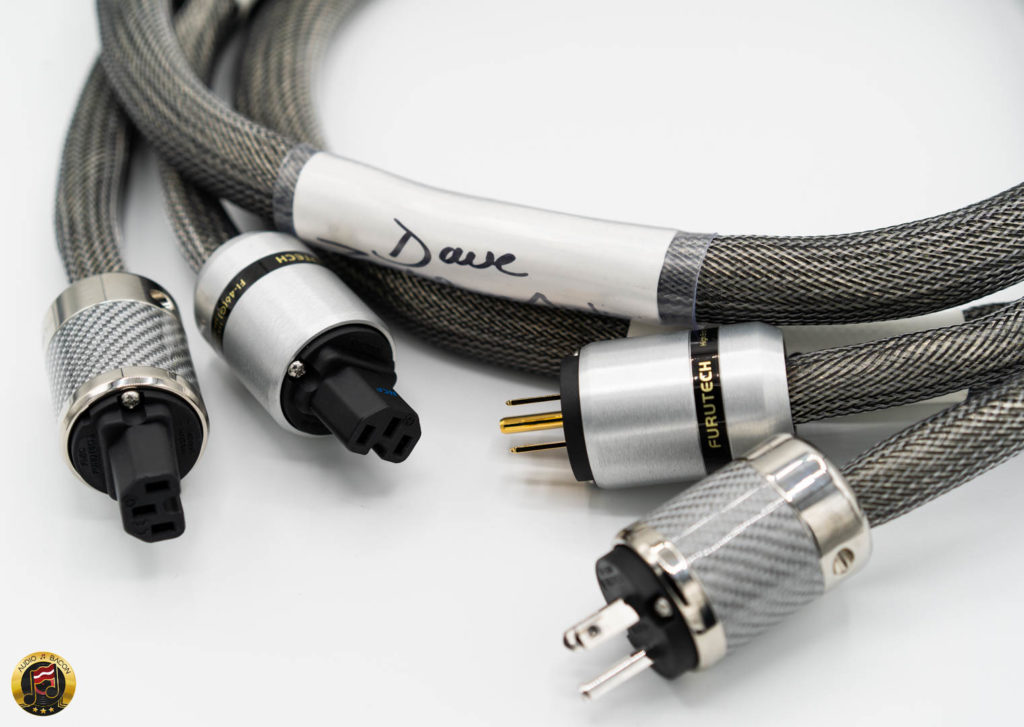
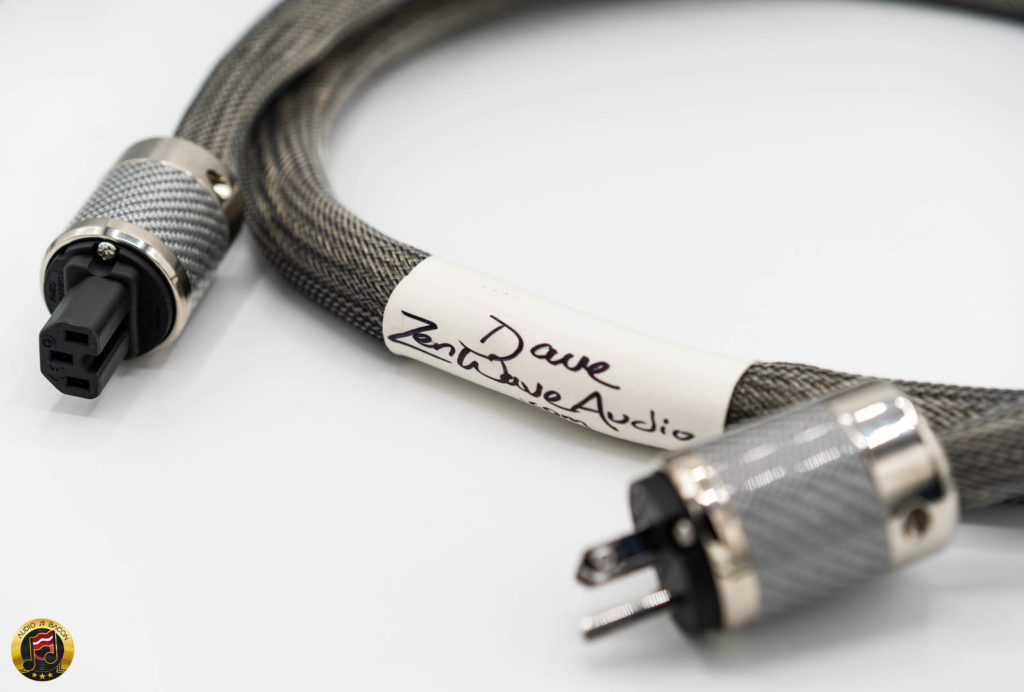

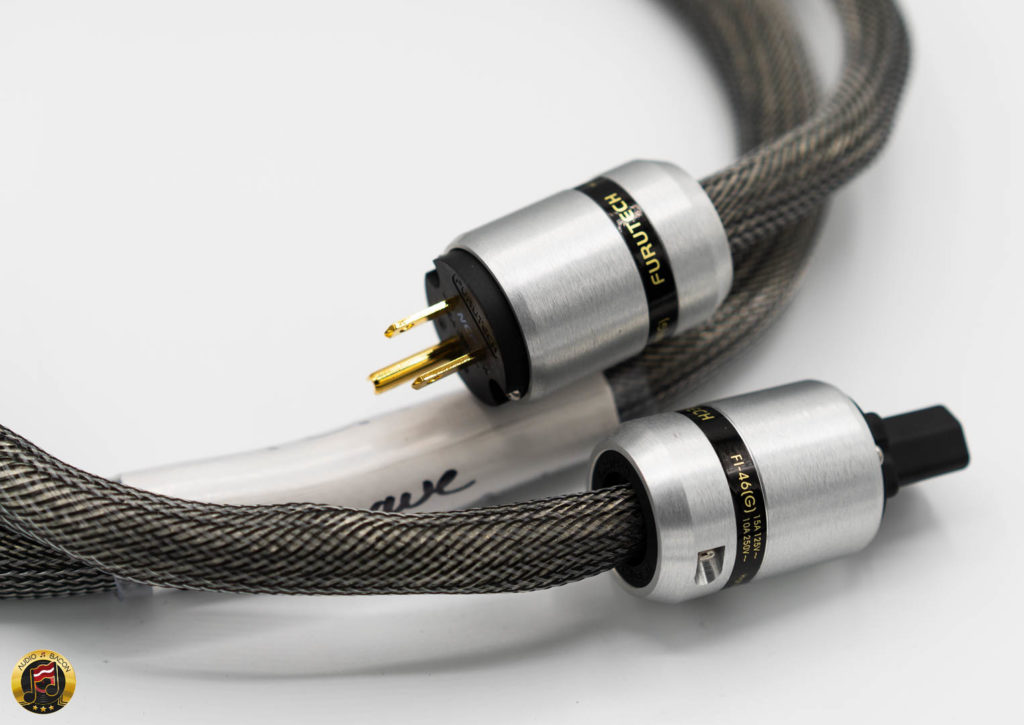

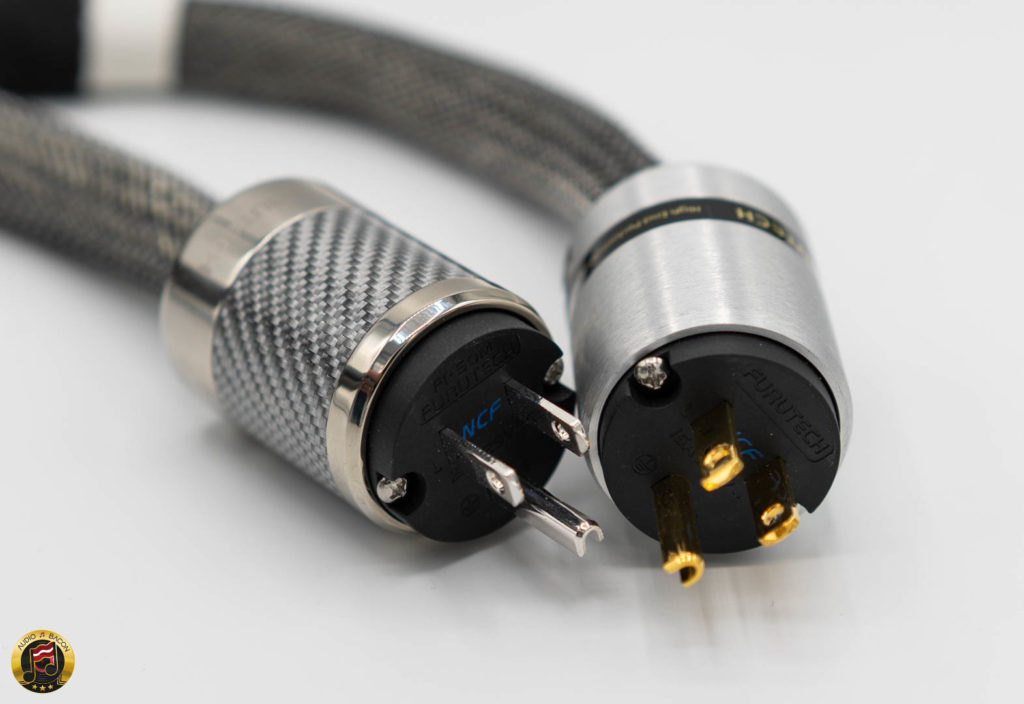



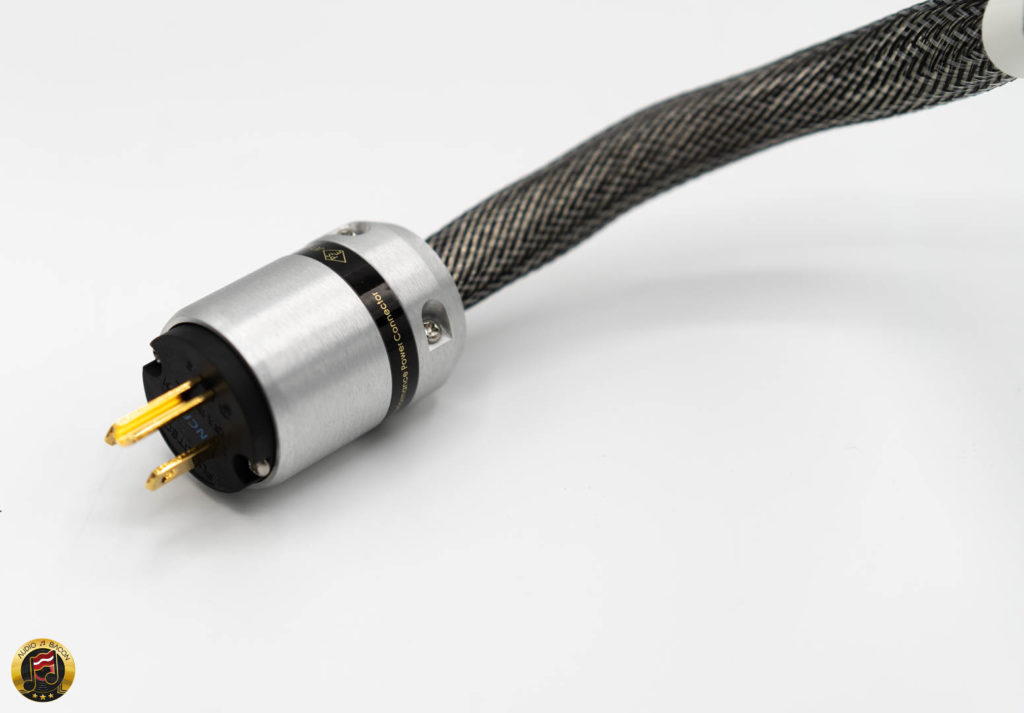
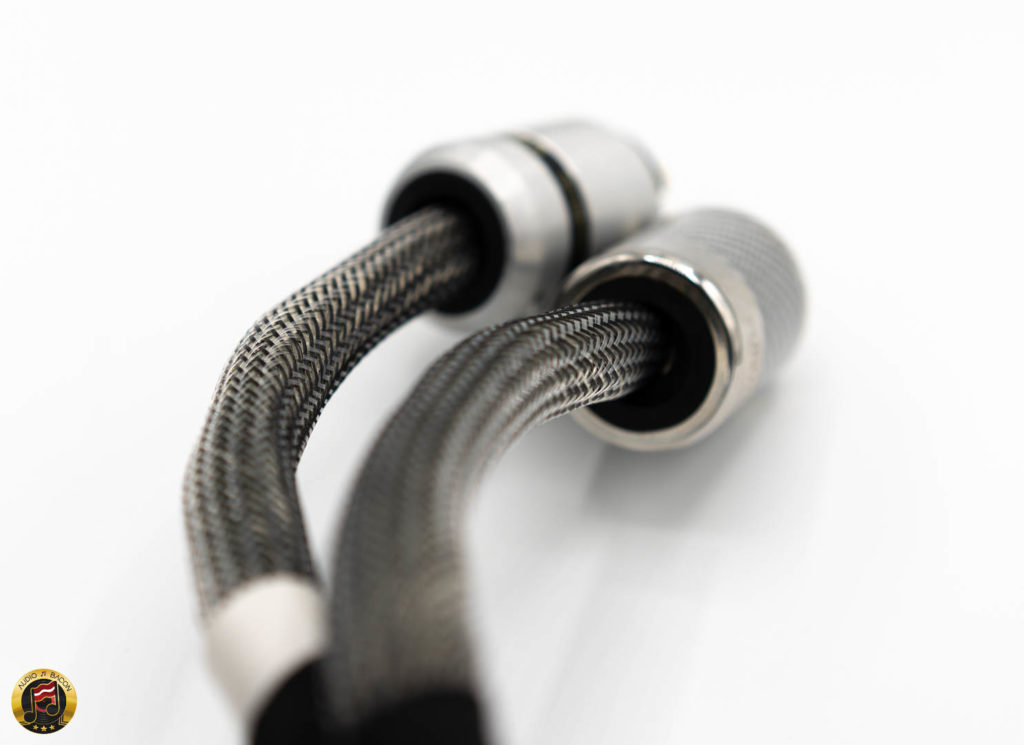

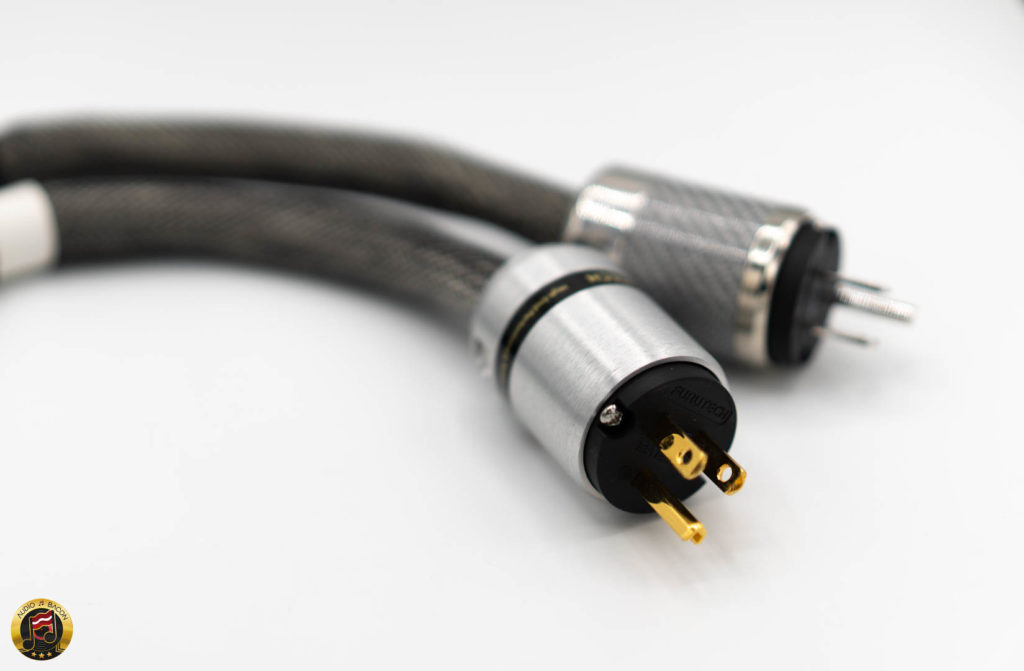


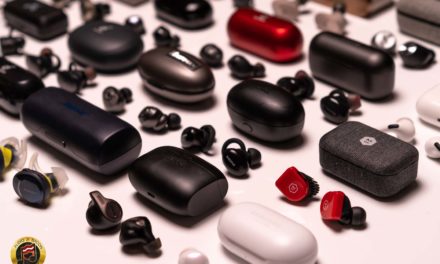
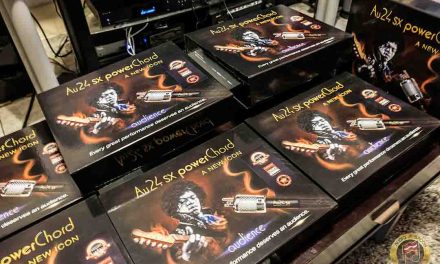



You literally can’t embarrass yourself more if you tried. This review is comical. Please turn in your “engineering” credentials asap. You are worse than someone in a cult.
How would you go about explaining something you can’t measure genius and yet thats whats happening when you use these cables and connectors. How do I know , because I’ve been making and using my own power cables for years . Your comments just show your ignorance.
Only in your mind is he embarrassed. Kind of a small mind? I have done many listening tests and found similar results.
I made some shorter hook up power cords one time using generic type 3 conductor 12 AWG cable. I happened to have some Cardas AC plugs, an IEC connector, and one Neotech IEC connector. One cable was 1.5 ft long and the other about 4 4t long.
What I found was they sounded very good and one was preferred over an audiophile cord in one application.
So the lesson I learned was the connectors do make quite a positive improvement.
Carl, where is your sense of adventure? I wish what he said was not true. I wish that cables and connectors made no difference. I have taken cables with gold ends to a non audiophile drummer who has a nice audio rig, and let him listen to the sound for a few days. He said the sound was too laid back, thick….like Mr. Audio Bacon wrote. I loan him Silver Rhodium, and the sound is alive, smooth…..and verified by a critical friend. I wish it were not true. Measurements are not going to explain this…but, just go to a conductive analysis of silver vs copper vs gold, vs brass and you have hard data that they do not all conduct the same. We should be open minded to variables of which science has not caught up with for measuring all the variables.
Aren’t all power cable reviews subjective to the listener? Not many companies release test data….But, how do these cables compare to Triode Wire Labs power cables. Their High Power Digital American and Obsession Statement mains are supposed to be some of the best bang for the buck cables. And, with all due respect, I’ve read the same type of favorable reviews. And they seem worthy.
Jay, you are using the term “colorless” (lacking instrumental color; grey, white, or bleached-out) when what you actually mean is “uncolored” (that is, the cable doesn’t add coloration of its own to the sound).
Just trying to keep things clear (as music should be). Best regards, LTL
Am I?
What a load of utter bullshit!
Nasty troll
Russell, you are the one contributing Bull. Keep your little rant away from these forums.
I see too many ignorant persons not wiling to try and they just comment… You don’t need a degree, just use your ears people!
Coming back to the connectors: for me, the gold version of connectors is not to be considered. Too colored, too warm and rounded.
The rhodium versions are the way to go and they come in many flavors: FI-38 R, FI-48 R NCF, and FI-50 with and without NCF.
@Jay I’m really interested in seeing a review of the new FI-48 (AG) connectors (silver plated).
Having played for a while with FI-38 and 50 and 50 NCF I would like to share with you the differences I hear.
Their sound signature is the same: rich, detailed, high-bandwidth, resolute with a touch of warmth in voices and bass. Not quite “forward” and not the most controlled in their presentation – not entirely neutral but with many qualities.
They take hundreds of hours to break-in and they do sound bright in the meantime.
FI-38 – is the most cost effective of the bunch, you get most of the qualities of the more expensive ones
FI-50 (non NCF) – I detect a lower noise floor because of the metal body of the connector which acts like a shield, as for the sound it is the same but with some added metallic shine (it simply won’t go even after heavy burning-in). For me it’s connector body related.
FI-50 (NCF) – The same as above, NCF seems to add a little “darkness” to the sound, a small drop in noise floor.
FI-48 (NCF) – The same sound as FI-50 – there is a slight difference related to the new body, seem to have less metallic shine. Maybe they wanted to fix it! Othe wise absolutely the same sound.
Both FI-48 and FI-50s (NCF or not) are beautifully crafted (and expensive).
They are reusable for many times (not like some competition models that have plastic breakable parts and low quality screws) and the clamps do not destroy the wire (some others use screws into the wire directly)
@ Jay: feel free to comment!
Yeah, I can’t really help those who choose to be ignorant. lol.
Those are interesting observations. I’ll have to get a few FI-48 NCFs to test out. Which wire are you using?
I used several: Furutech 3TS20 and TCS-31, Nordost Vahalla 1, Chord , Oyaide Tunami, Isotek Sequel
Christian, do you find that also the new FI-50 NCF has added some metallic shine?
I plan to use it with TCS-31.
Jay did not mention the metallic shine.
Hello Christian. This is Randall Wilson in Vermont, Illinois. Upon reviewing your comments regarding the Furutech Fi-50 NRC (R) IEC connector performance, I am seeking your advice on whether or not I should continue with breaking in the FI-50 NRC Rhodium plated IEC Connector I purchased from Chris at VH Audio. I have this connector attached to a new Cullen Cable Crossover power cable which is connected to the Furutech FI-06 NRC (R) IEC receptacle, which is connected to my Furman Power Conditioner. I initially liked what I was listening to, but , am starting to wonder if I should continue breaking this plug in, or switch both IEC connectors with the silver IECs at this point. I am a veteran audiophile and prefer a full rich sound with ambience and air. In your opinion, will I experience what I’m looking for after these two IECs are broken in ? I use a Fosgate Black Ice F-22 Integrated tube amp along with his F-159 hybrid phono stage.
hello there. I am the writer of another hi fi blog. I have found out the same very fastidious thing. I have never written about it since it is better not to think about. It is more like what happens at the beginning and at the end of a power cable that matters the most…and it is extremely easy to listen to. You don’t have to believe or not. Of course it is better not to believe. It is fastidious to think plugs are so important. But let’s take an example. Take a decent power cord like the VDH The Mainsstream. It is OK, and it is sold with fairly normal plugs. Change connectors and it is a different cable. The thing now is: it is better for the same price a decent cable with super connector or a super cable with normal connectors? my findings are toward the first choice. Of course if you don’t have money problem is better a super cable with super connectors!
Yeah…I expected the cable itself to play a more important role. As I was DIYing a few power cords, I tried a range of connectors and heard substantial differences on the same wire. I figured it might’ve been the variations in lengths or something else. I knew they would make a difference but not at the night & day levels.
Hi Jay, not surprised at all. I’ve heard it myself, to my disbelief and misfortune of my wallet. (Thought I play more at the much lower budget level.)
I have more experience building analogue IC and RCA connectors can play an equally big role in the sound as the cables, depending on mix and match. If the cable has a strong signature, it would mask the connectors. Even different plating on same connector design have some impact. And best part: engineer friends who are supposed to be “objective” heard all these differences.
This is super fun for a DIY tweaked like me. =)
Armchair scientists can say what they want, it doesn’t reflect my listening experience. And some people simply are not attuned to subtle changes.
BTW, how’s things going for you? Glad to see you’re back in action.
Any possibility of a before and after comparison using the McMaster’s silver conductivity paste [Part # 1219K57 – $100] on the AC plug contacts of less expensive DIY AC cables [plugs/IEC connectors and their wire terminations ] for front-end components and power amp vs. the Furutech plugs? Might need to change out the wall receptacle from “wet” to “dry” when comparing the Furutech plugs w/o the silver paste…
Just to say; had an furutech Fi-06 inlet on my amp and wich is good and exchanged for the Fi-09; the difference between the two made buy another Fi-09 for the dac, as it’s more crisper forwarding and detailed(all ncf rodium). Connected with an Fi-38R male, makes me thinking buy next time the Fi-50. Thanks for the review and; for me, one that can not see the difference, i can not call them audiophile listener, i would put them on the 99% of the population, wich don’t care for a little(big for sound lovers) difference. And that’s ok but, go to other sites
http://www.cardas.com/e-5.php
As a cost effective alternative, the Cardas Rhodium plated silver over copper turned out to be a nice plug .
It has a metal shell providing shielding up to the connectors as well.
Using Furutech FP-S032N 12 AWG for source components provides a nice fit n’ finish and they provide a clear improvement over the stock cables that came with my source components. My only complaint is the Rube Goldberg required to fan out strands of the cable shield to the outside metal shell and having to use a 1/4″ strip of aluminum tape over the shell seam to ground the shell.
Another possible option that would be more professional would be to make a ground pigtail to a ring connector that somehow fastens into the shell fastener screws [easier said than done]. Very long break in period [possibly up to 800 hours for the wire]
About $250 to construct a 3′ cord.
Bonsoir quelle est la meilleure schuko a ce jour? fi 50ncf , oyaide M1, fi 38 , charlin or ?????
Hi jay, what would you suggest for a darker sounding wire to use with the FI-50s to get a more colored sound?
https://audiobacon.net/2019/08/17/27-audiophile-power-cables-reviewed/3/
Hi Jay, if i use the ZenWave PL power cable for both my preamp & phono stage, which power cable would you recommend for my power amp to counterbalance the “thinner” ZW cables in giving my sound that extra fullness or weight needed?
OR
if i went down the path of using Furutech DPS 4.1 for all components?
I have a 20 watt class A power amp
tube pre & tube phono
thanks
chris